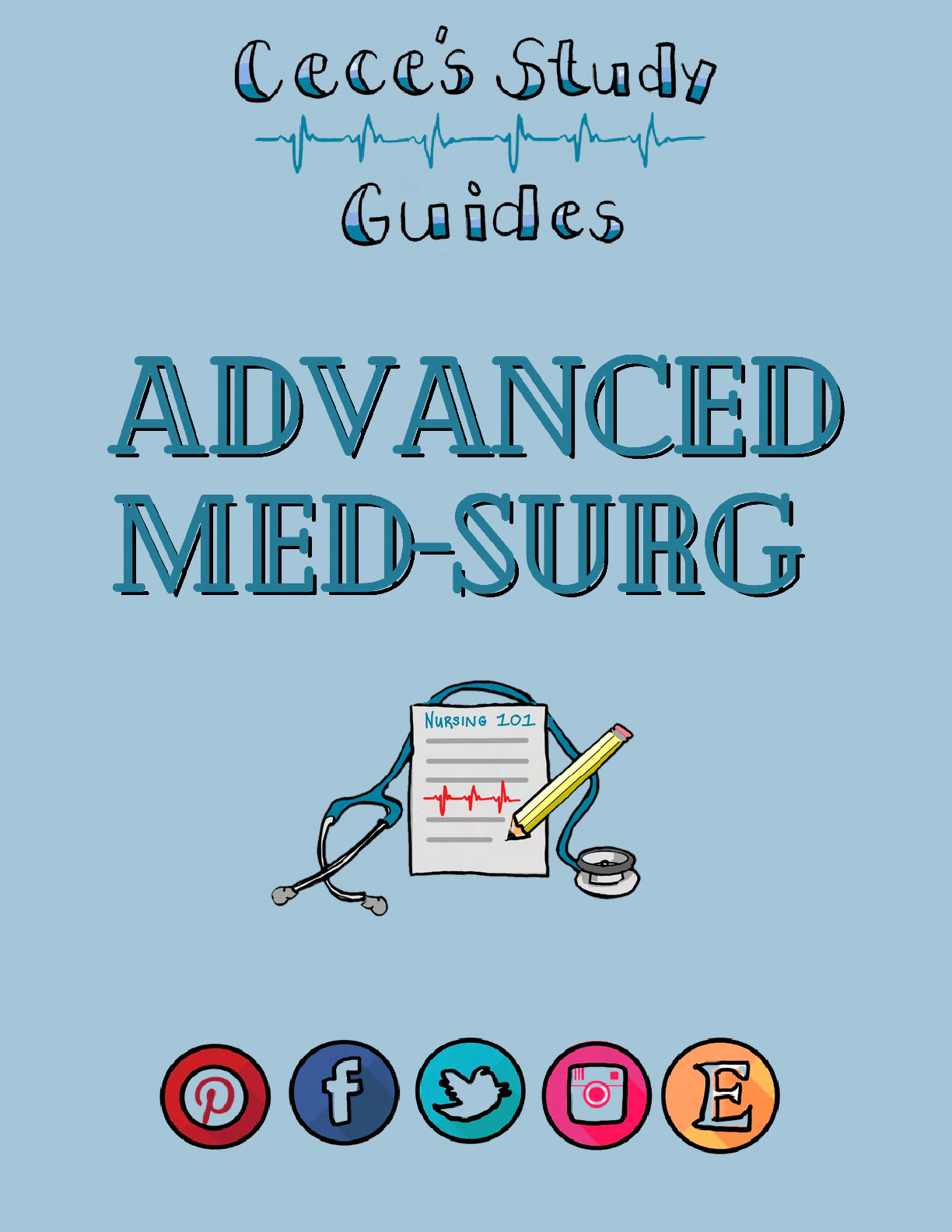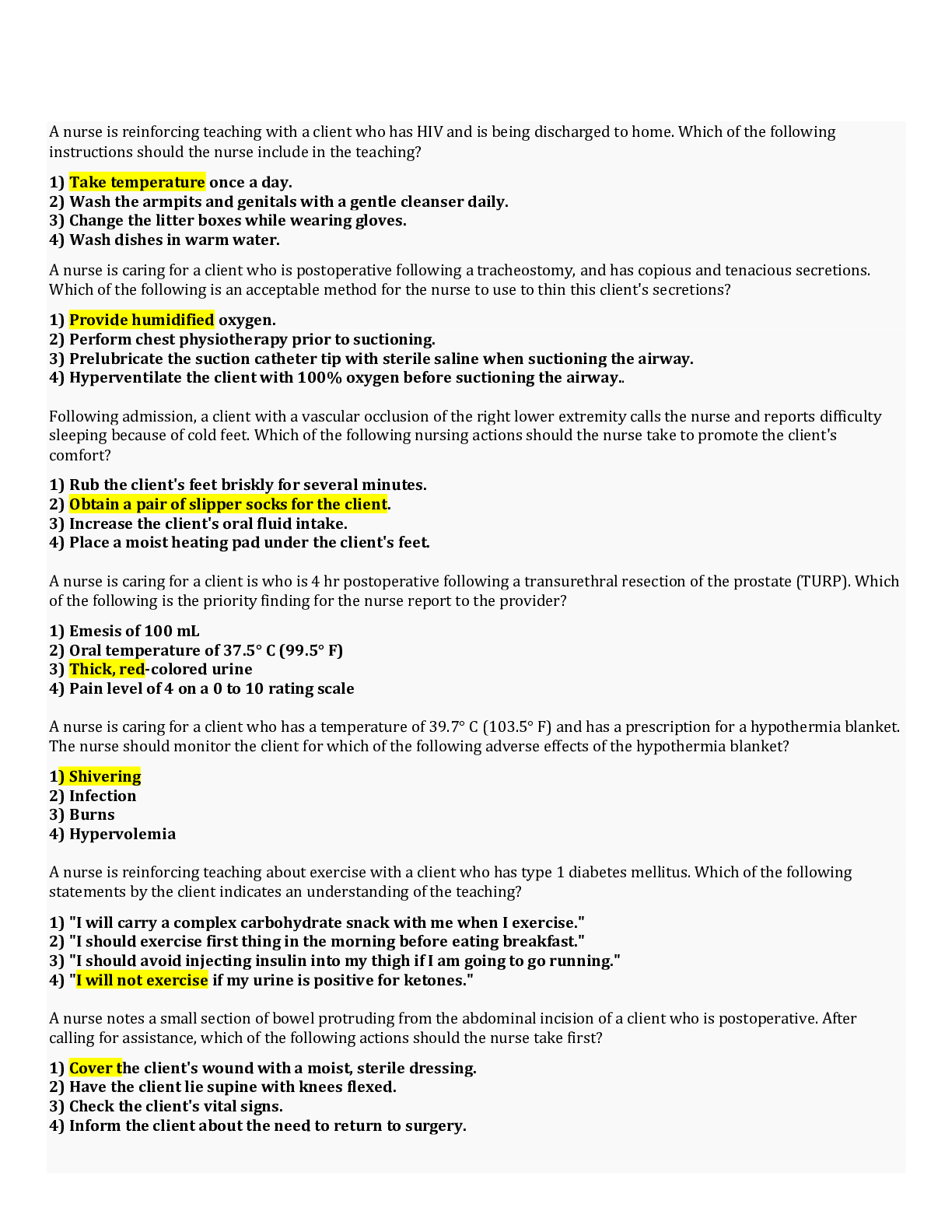*NURSING > STUDY GUIDE > Walden University NURS 6550N Midterm (Group Study Guide) |CHEST Guideline for Antithrombotic Therapy (All)
Walden University NURS 6550N Midterm (Group Study Guide) |CHEST Guideline for Antithrombotic Therapy in VTE
Document Content and Description Below
CHEST Guideline for Antithrombotic Therapy in VTE The following are 11 key points about this updated guideline document from the American College of Chest Physicians on antithrombotic therapy for ve... nous thromboembolism (VTE): 1. For VTE without an associated cancer diagnosis, all direct oral anticoagulants (dabigatran, rivaroxaban, apixaban, or edoxaban) are recommended over vitamin K antagonist (VKA) therapy (all Grade 2B) and VKA therapy is recommended over low molecular weight heparin (LMWH; Grade 2C). 2. For VTE associated with cancer, LMWH is recommended over VKA (Grade 2B) or any direct oral anticoagulants (all Grade 2C). 3. Anticoagulants should stop after 3 months of therapy in patients with an acute, proximal deep venous thrombosis (DVT) provoked by surgery rather than shorter or longer treatment courses (Grade 1B). 4. Anticoagulants should also be stopped after 3 months in patients with a proximal DVT or pulmonary embolism (PE) provoked by a nonsurgical transient risk factor over shorter or longer courses (Grade 1B for high bleeding risk patients, Grade 2B for low or moderate bleeding risk patients). 5. Anticoagulation should be given for 3 months in patients with a first unprovoked VTE and a high risk of bleeding (Grade 1B), but should be extended without a scheduled stop date in patients with a low or moderate risk of bleeding (Grade 2B). 6. For patients with acute VTE who are treated with anticoagulation, the guideline recommends against the use of an inferior vena cava filter (Grade 1B). 7. For patients with an unprovoked proximal DVT or PE who are stopping anticoagulant therapy, the guideline suggests the use of aspirin over no aspirin to prevent recurrent VTE if there are no contraindications to aspirin therapy (Grade 2B). 8. For patients with acute DVT, the guideline recommends against the use of compression stockings routinely to prevent the post-thrombotic syndrome (Grade 2B). 9. For patient with subsegmental PE and no DVT, the guideline suggests clinical surveillance over anticoagulation when the risk of VTE recurrence is low (Grade 2C). The guideline recommends the use of anticoagulation over surveillance when the risk of VTE recurrence is high (Grade 2C). 10. For patients with an acute PE and hypotension (massive PE), the guideline recommends the use of thrombolytic therapy (Grade 2B), preferring systemic therapy over catheter-directed thrombolytic therapy (Grade 2C). 11. For patients with recurrent VTE while treated with a non-LMWH anticoagulant, the guideline recommends changing to LMWH therapy (Grade 2C). If patients suffer a recurrent VTE while on LMWH treatment, the guideline recommends increasing the LMWH dose (Grade 2C). Cardiovascular disorders Chapter 10, “Heart Disease” (pp. 328-446) Chapter 11, “Systemic Hypertension” (pp. 447-478) Chapter 12, “Blood Vessel & Lymphatic Disorders” (pp. 479-506) Chapter 28, “Lipid Disorders” (pp. 1269-1277) ACS protocol: low risk vs high risk mi- use of statins and ASA, ace inhibitors. High intensity statin therapy (atorvastatin 40-80mg, rosuvastion 20 -40 mg) mod intensity. MOST patients with vascular disease in the absence of heart failure or LV dysfunction should be treated with an ACE Metabolic syndrome- (three or more of the following ) abdominal obesity, triglycerides 150mg/dl or high , HDL less than 40 for men, less than 50 for women, fasting glucose 110 or higher and hypertension. Contraindications to thrombolytic therapy in stroke and MIs- ST elevation in AVR = left main or three vessel diseases. When the there is not an ST elevation, hemorrhagic stroke MONA, what is it an when is it used? MONA is an acronym used to help medical professionals remember the initial treatment for acute coronary syndrome. MONA stands for morphine, oxygen, nitroglycerin and aspirin (“MONA greet chest pain patients at the door”). Duke criteria for infective endocarditis, presentation and treatmentDiagnostic : 2 Major Criteria and 0 Minor Criteria Diagnostic : 1 Major Criteria and 3 Minor Criteria Diagnostic : 0 Major Criteria and 5 Minor Criteria Major Diagnostic Criteria Positive blood culture for typical Infective Endocarditis organisms (strep viridins or bovis, HACEK, staph aureous without other primary site, enterococcus), from 2 separate blood cultures or 2 positive cultures from samples drawn > 12 hours apart, or 3 or a majority of 4 separate cultures of blood (first and last sample drawn 1 hour apart) Echocardiogram with oscillating intracardiac mass on valve or supporting structures, in the path of regurgitant jets, or on implanted material in the absence of an alternative anatomic explanation, or abscess, or new partial dehiscence of prosthetic valve or new valvular regurgitation Minor Diagnostic Criteria Predisposing heart condition or intravenous drug use Temp > 38.0° C (100.4° F) Vascular phenomena: arterial emboli, pulmonary infarcts, mycotic aneurysms, intracranial bleed, conjunctival hemorrhages, Janeway lesions Immunologic phenomena: glomerulonephritis, Osler nodes, Roth spots, rheumatoid [Show More]
Last updated: 1 year ago
Preview 1 out of 19 pages
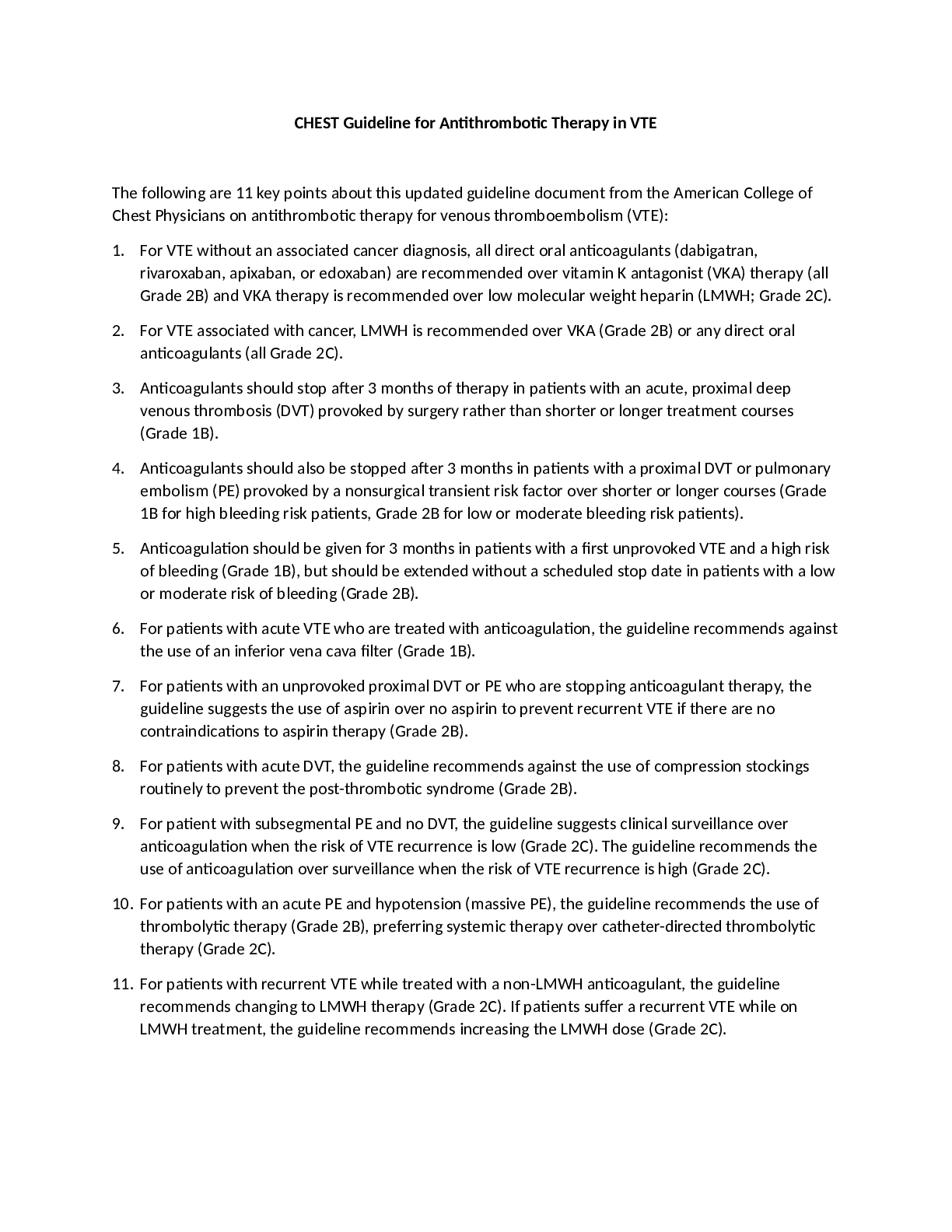
Reviews( 0 )
Document information
Connected school, study & course
About the document
Uploaded On
Apr 11, 2022
Number of pages
19
Written in
Additional information
This document has been written for:
Uploaded
Apr 11, 2022
Downloads
0
Views
140

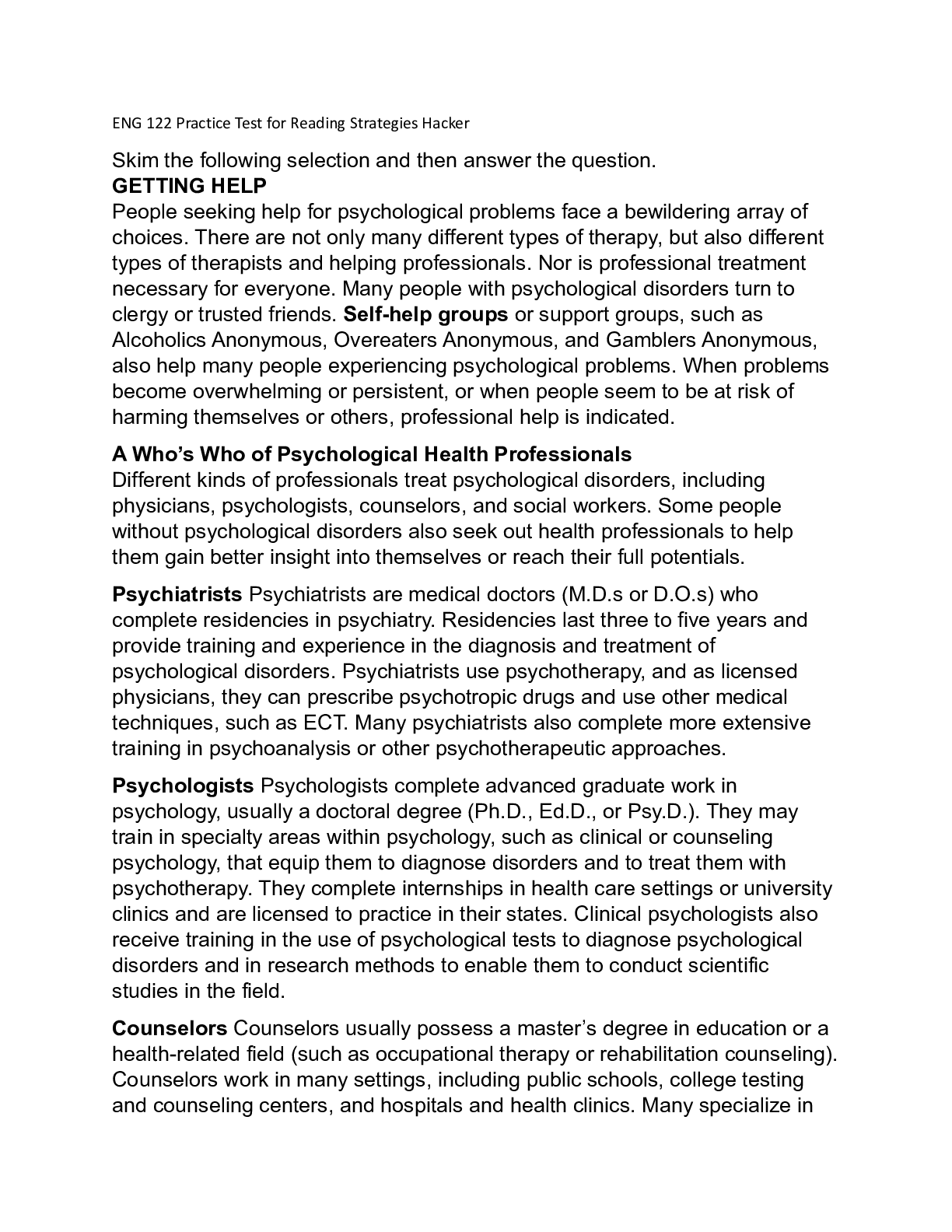
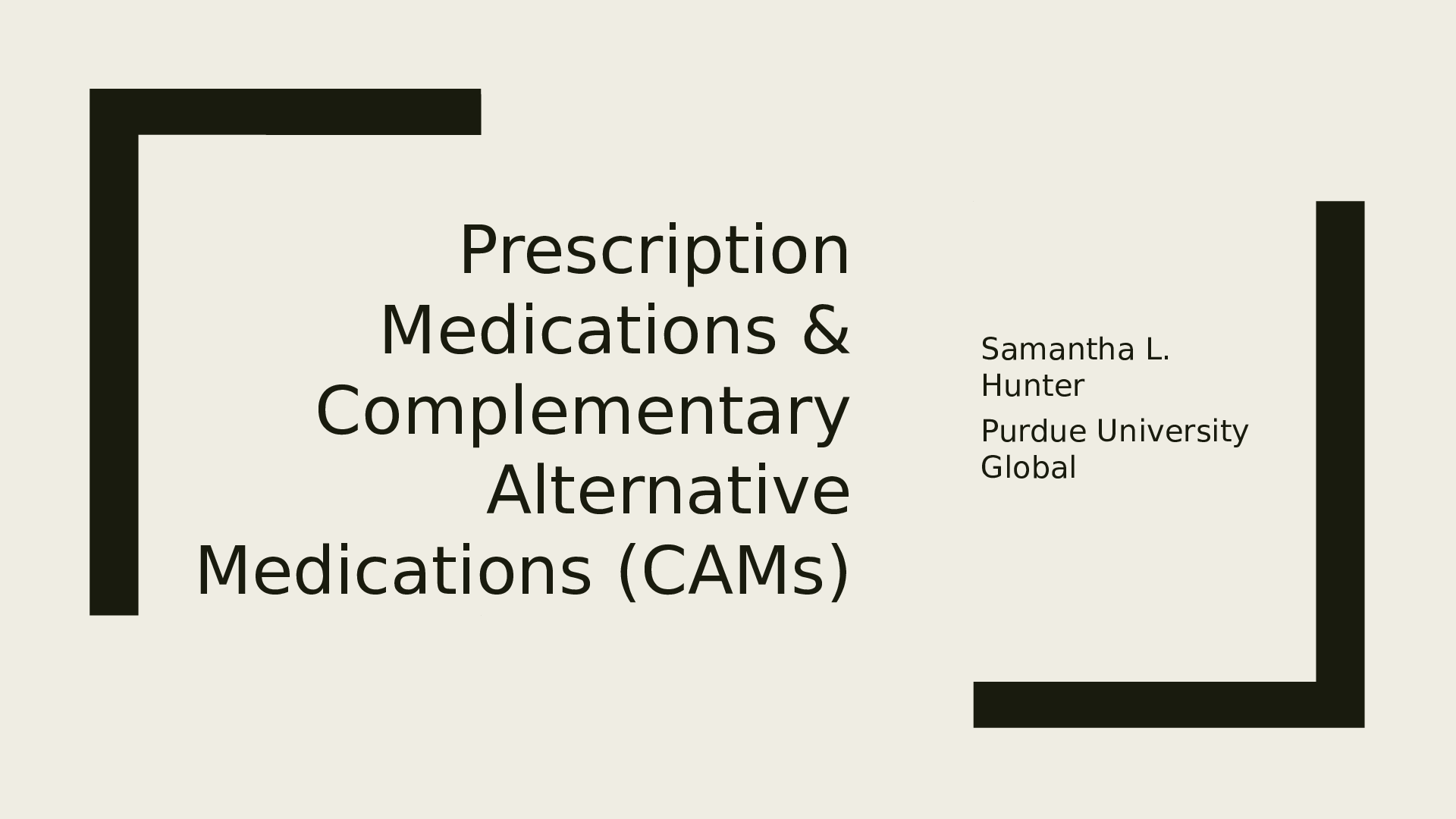
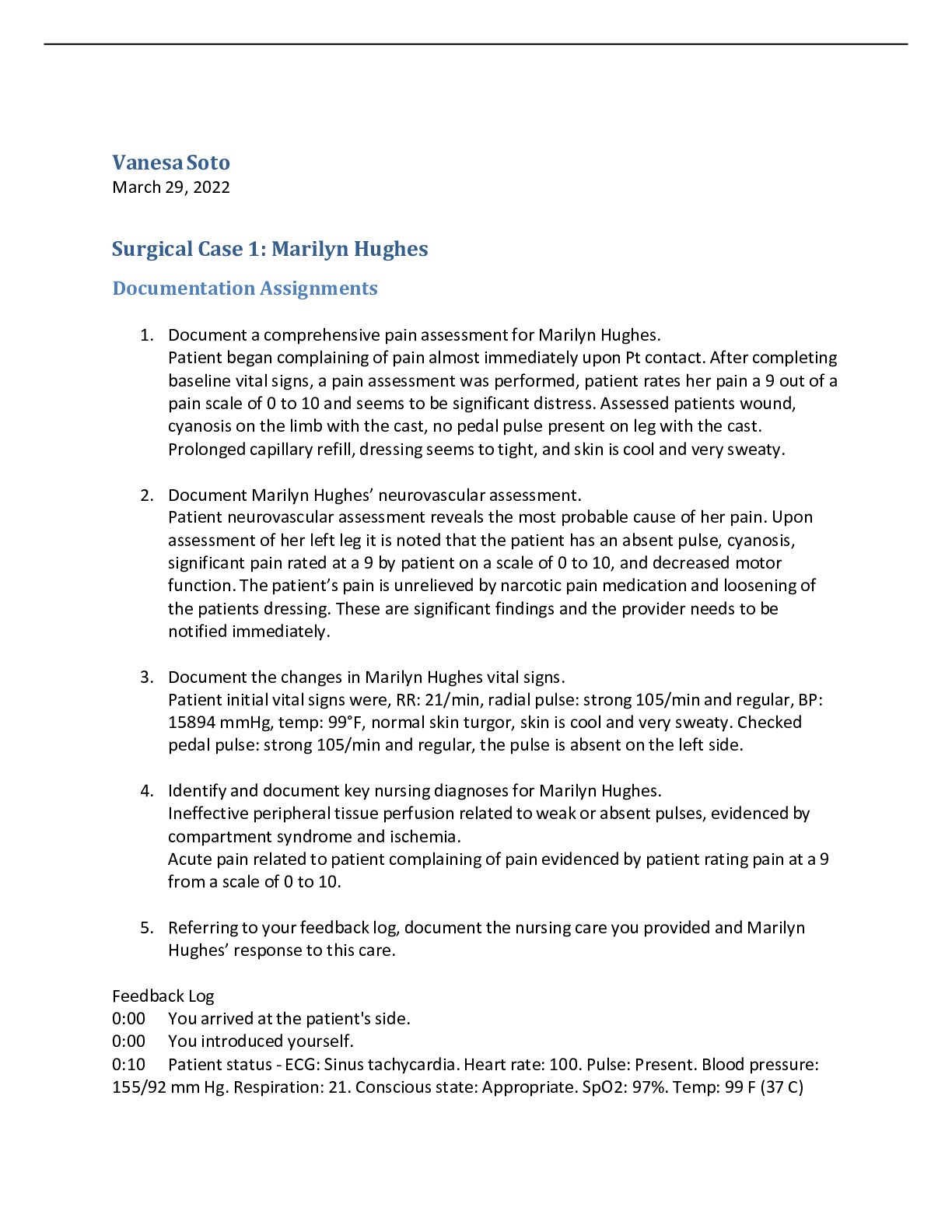
.png)
.png)
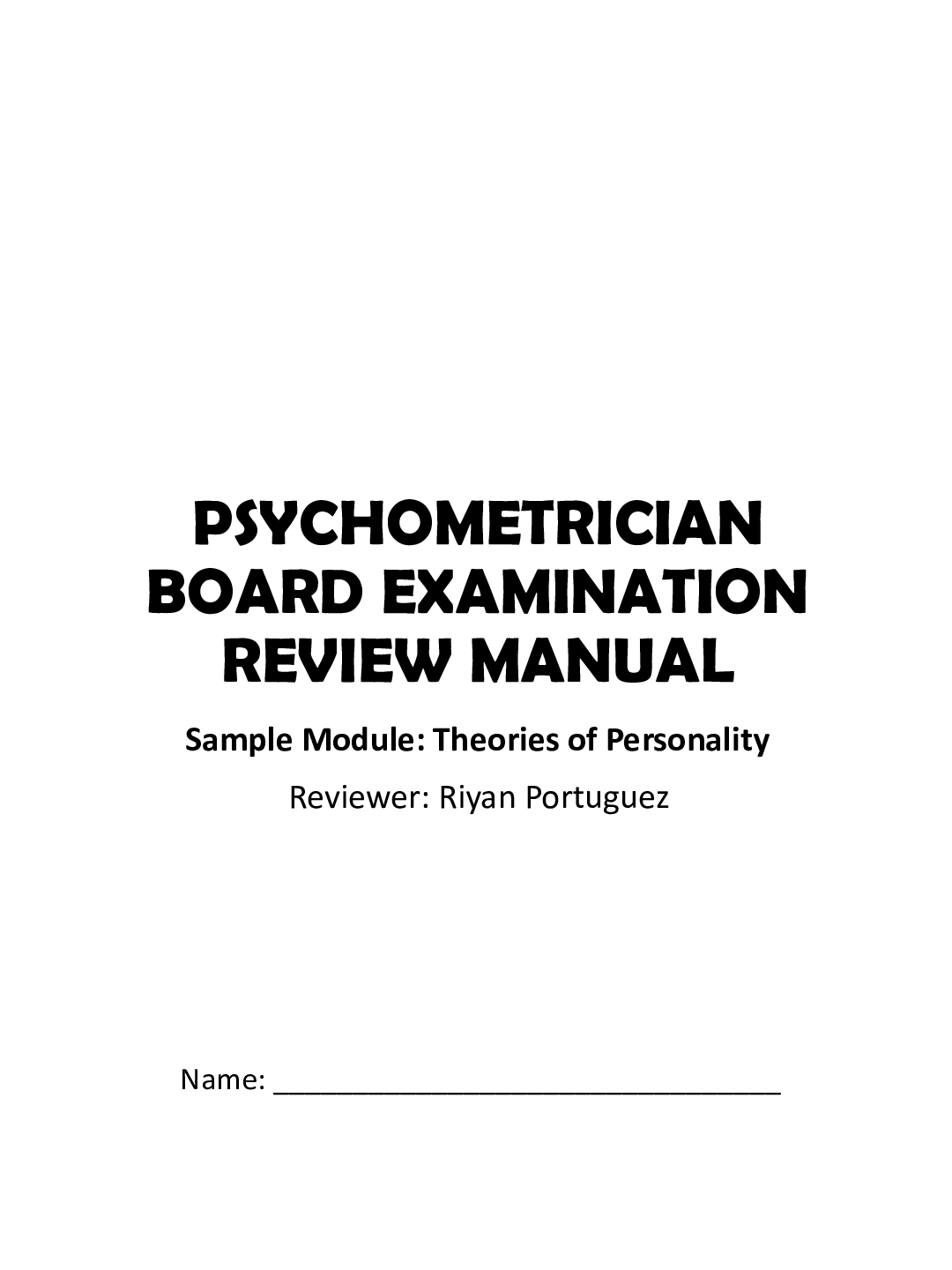
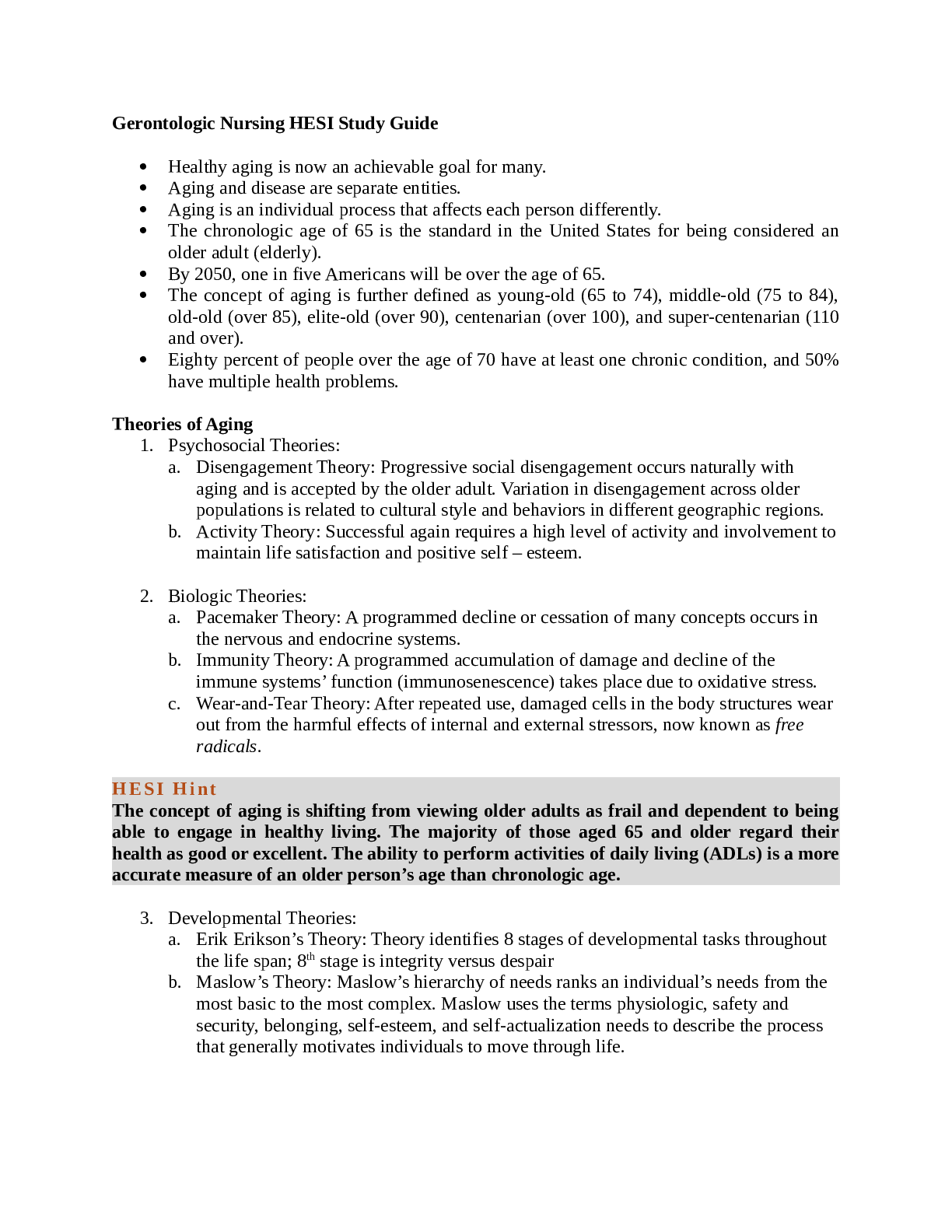


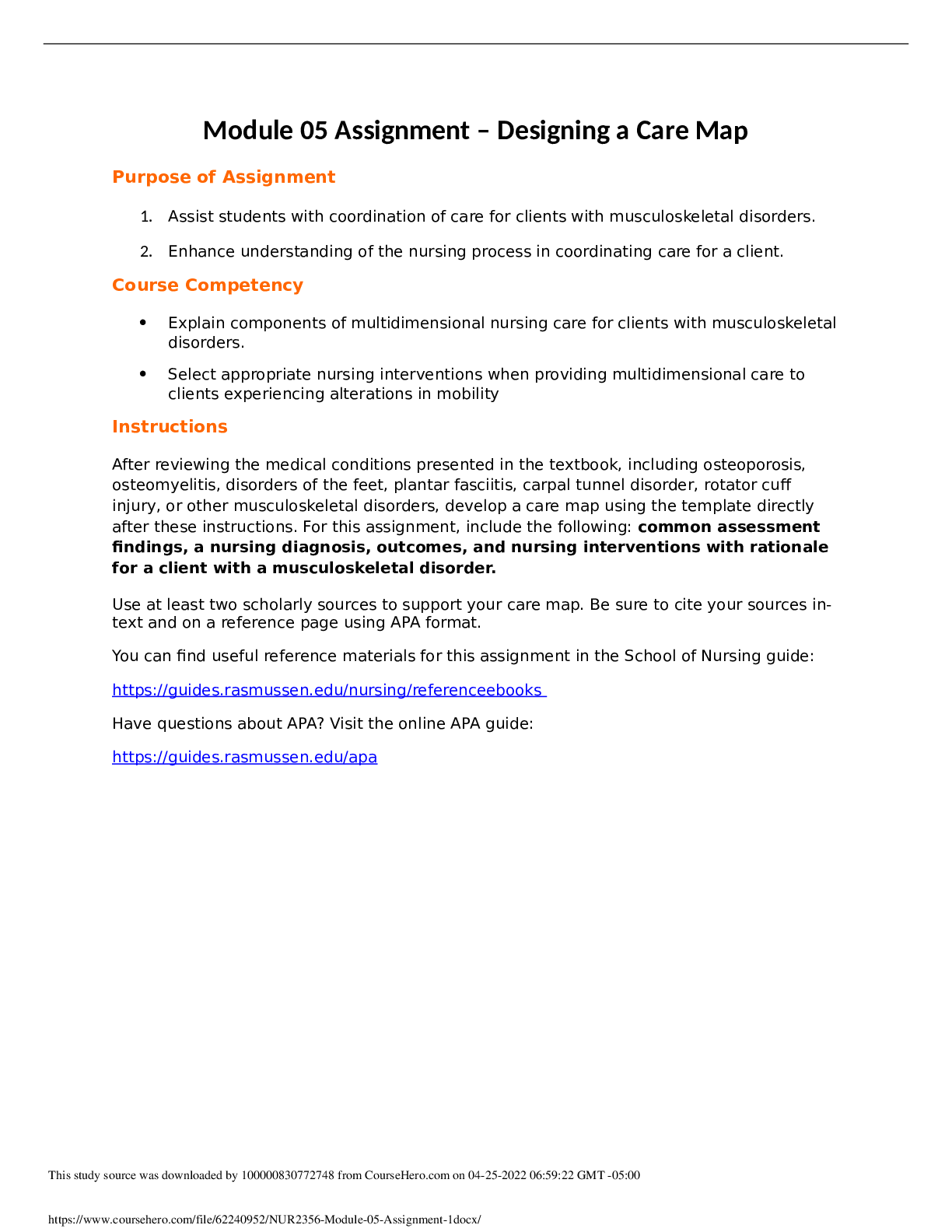
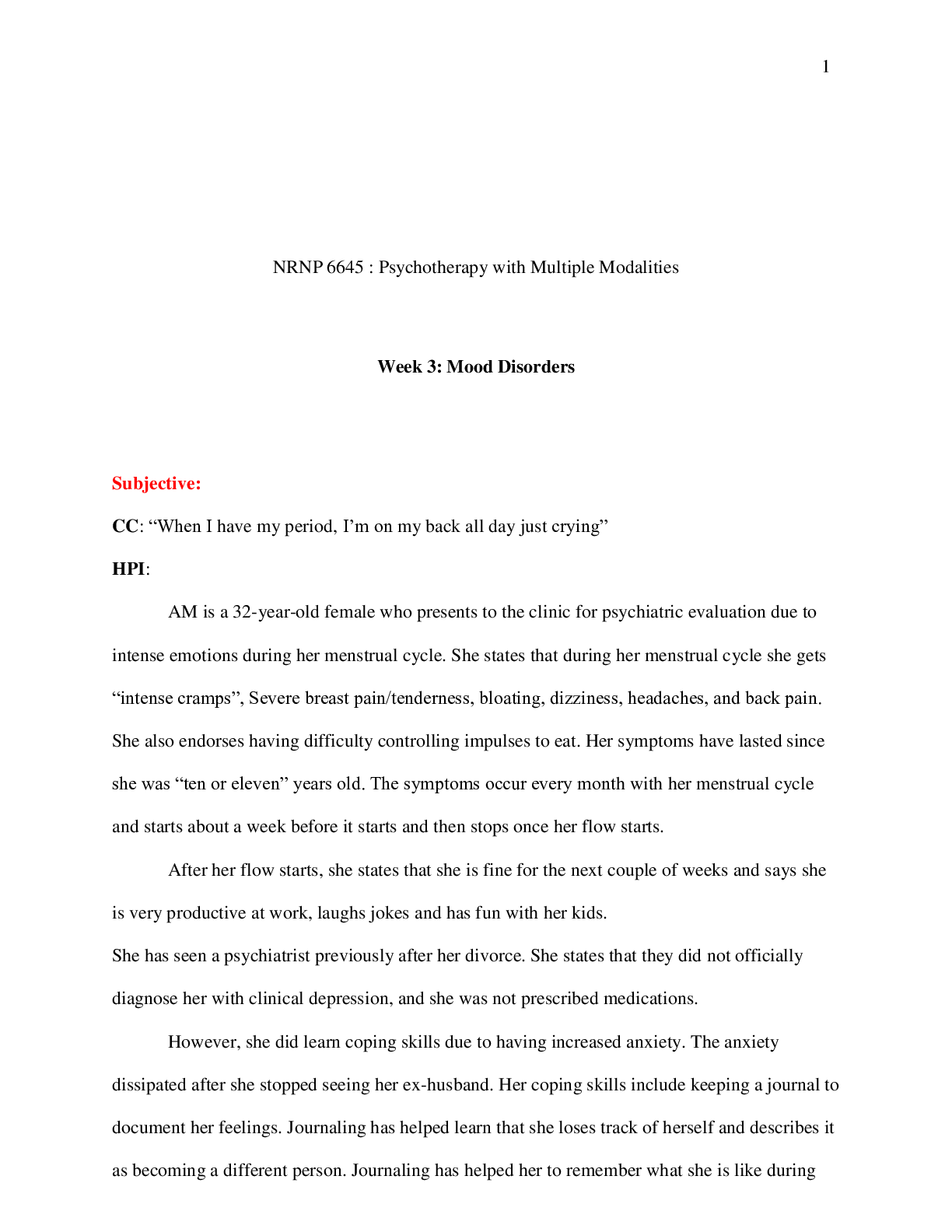

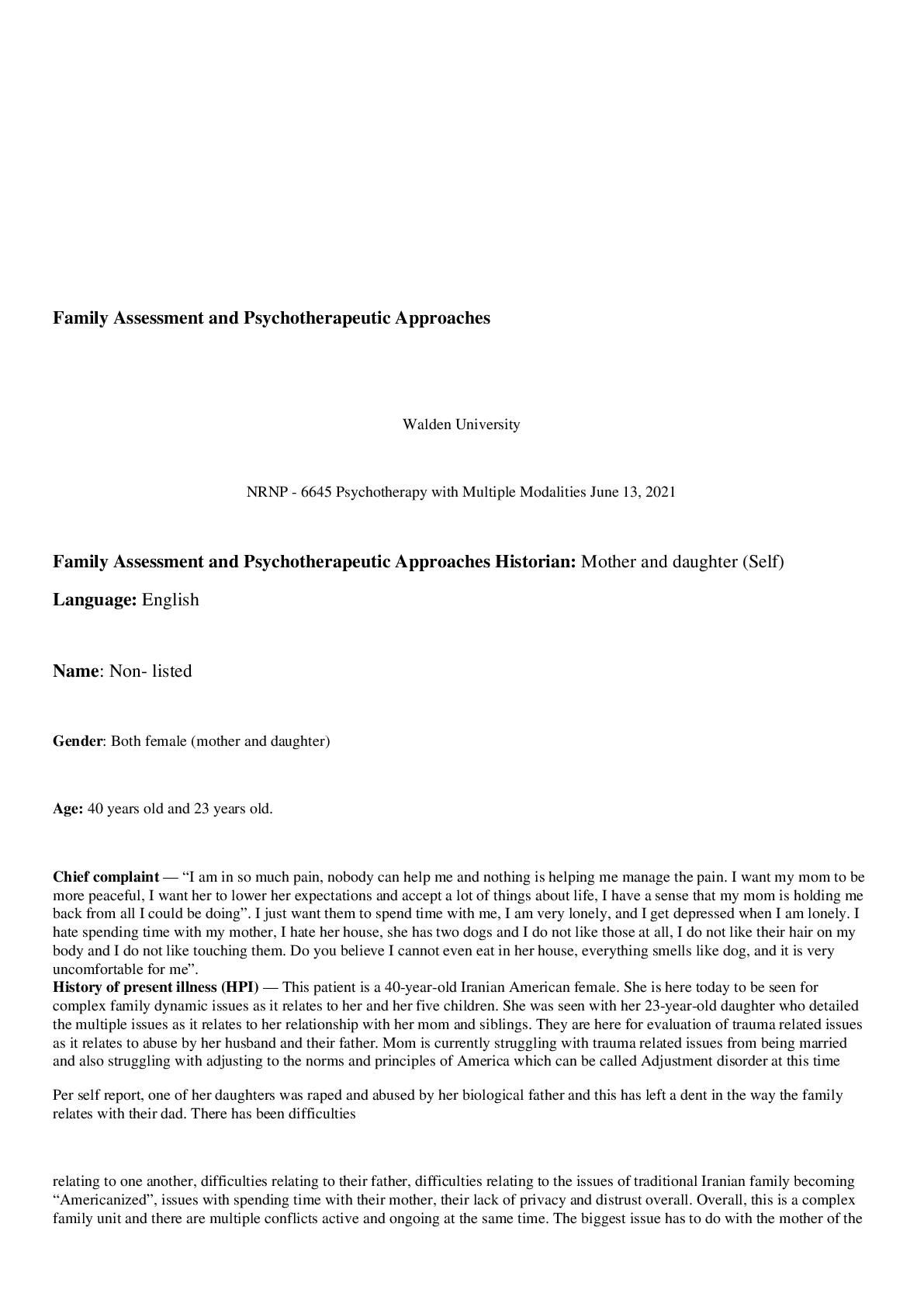
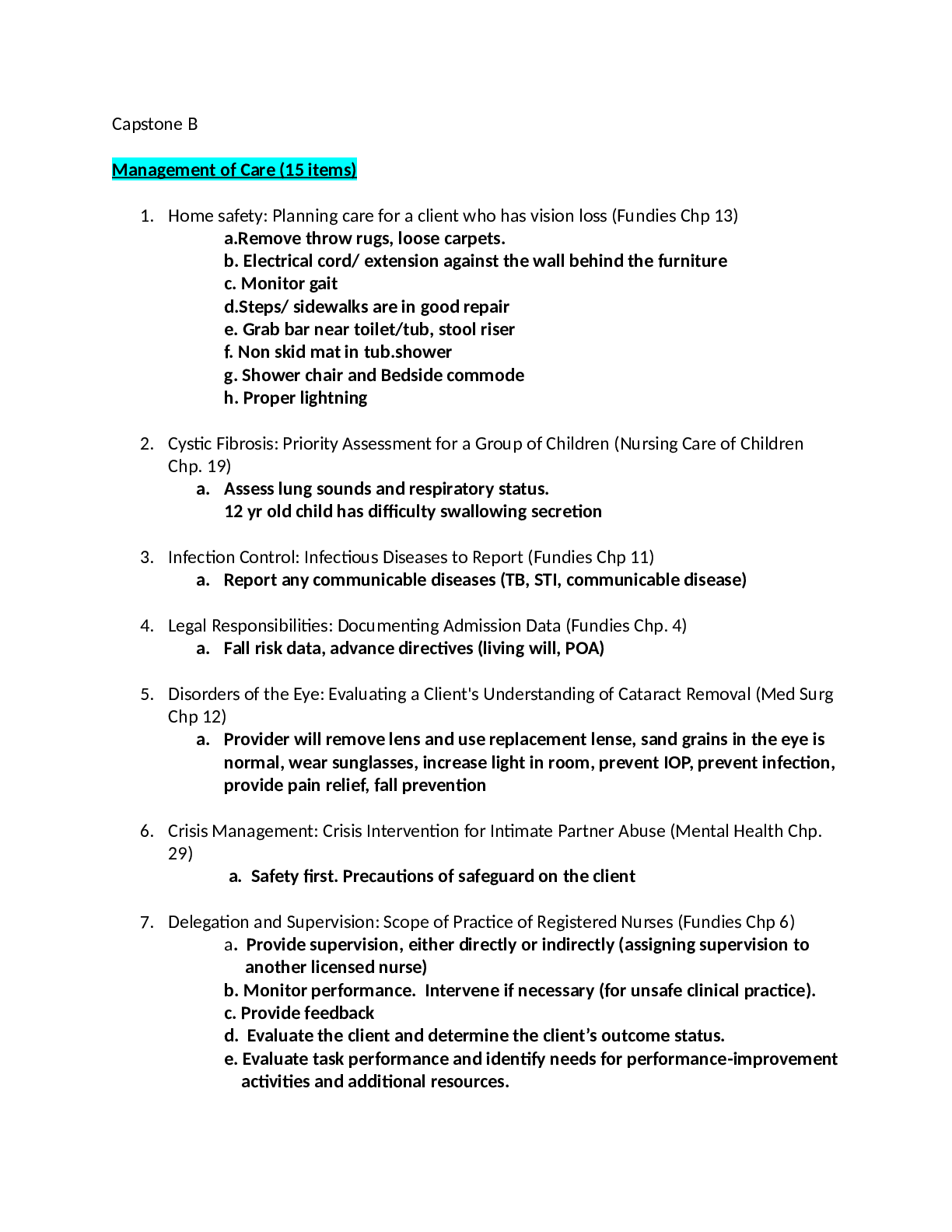
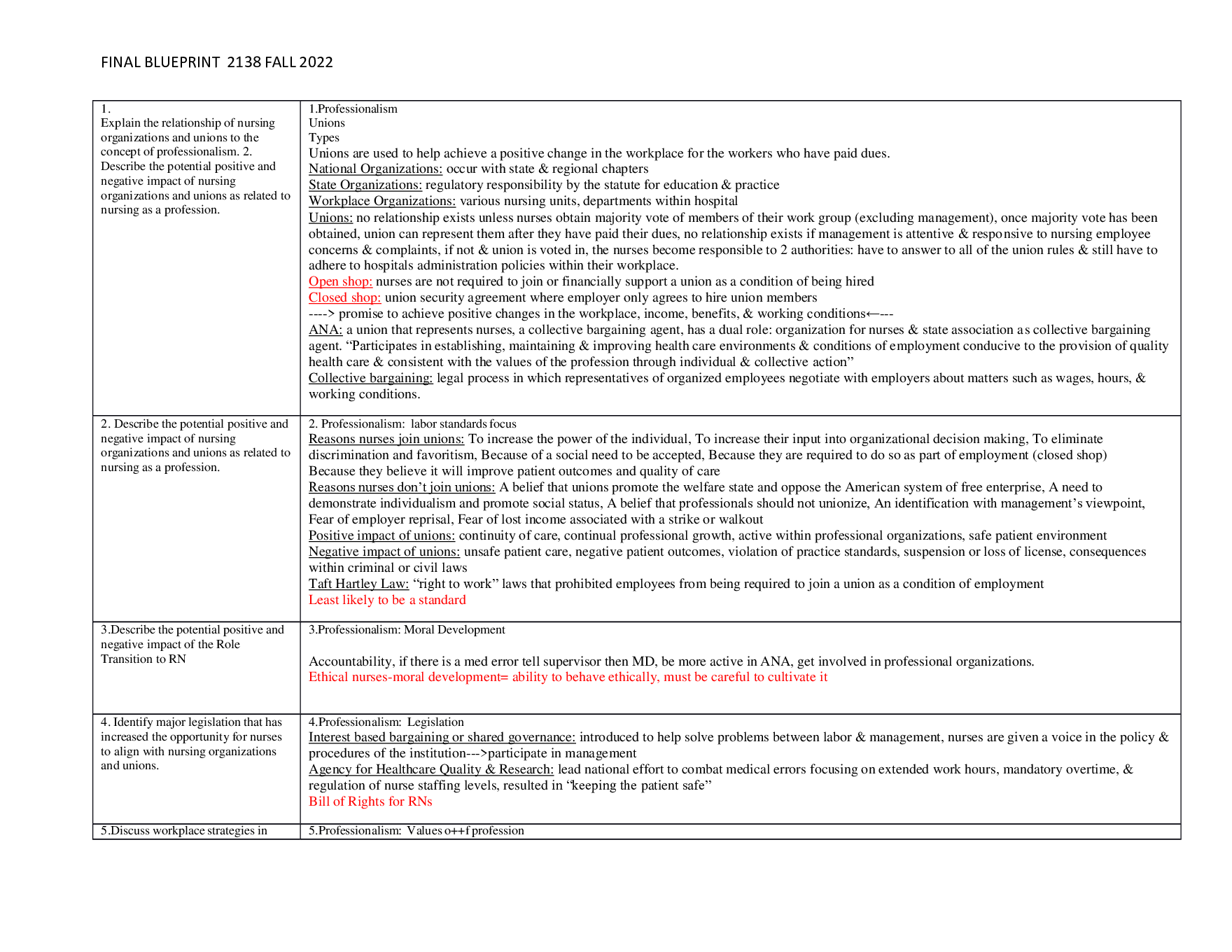
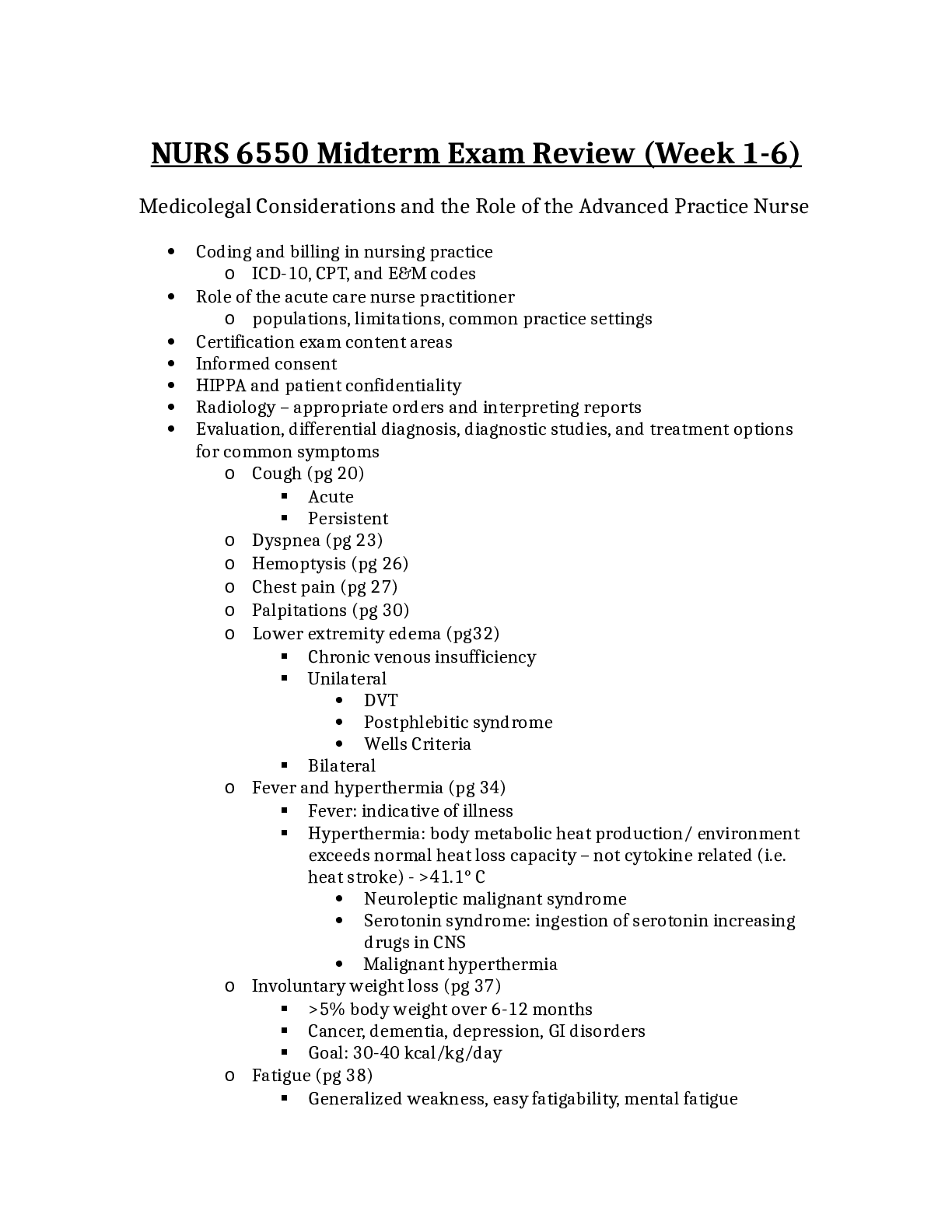








.png)

